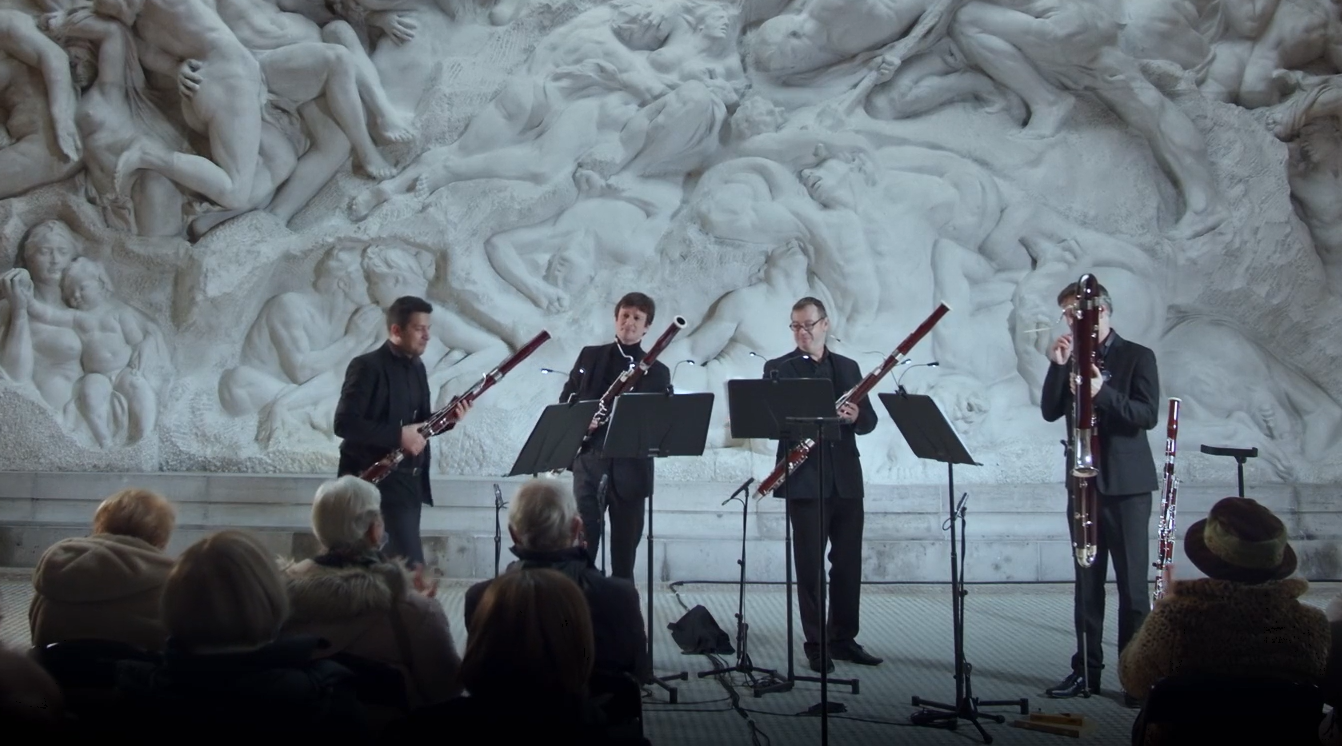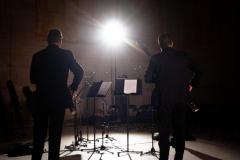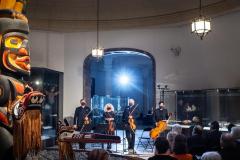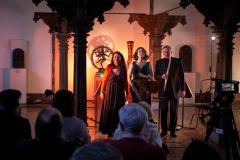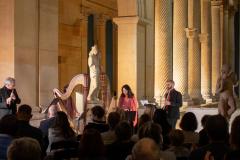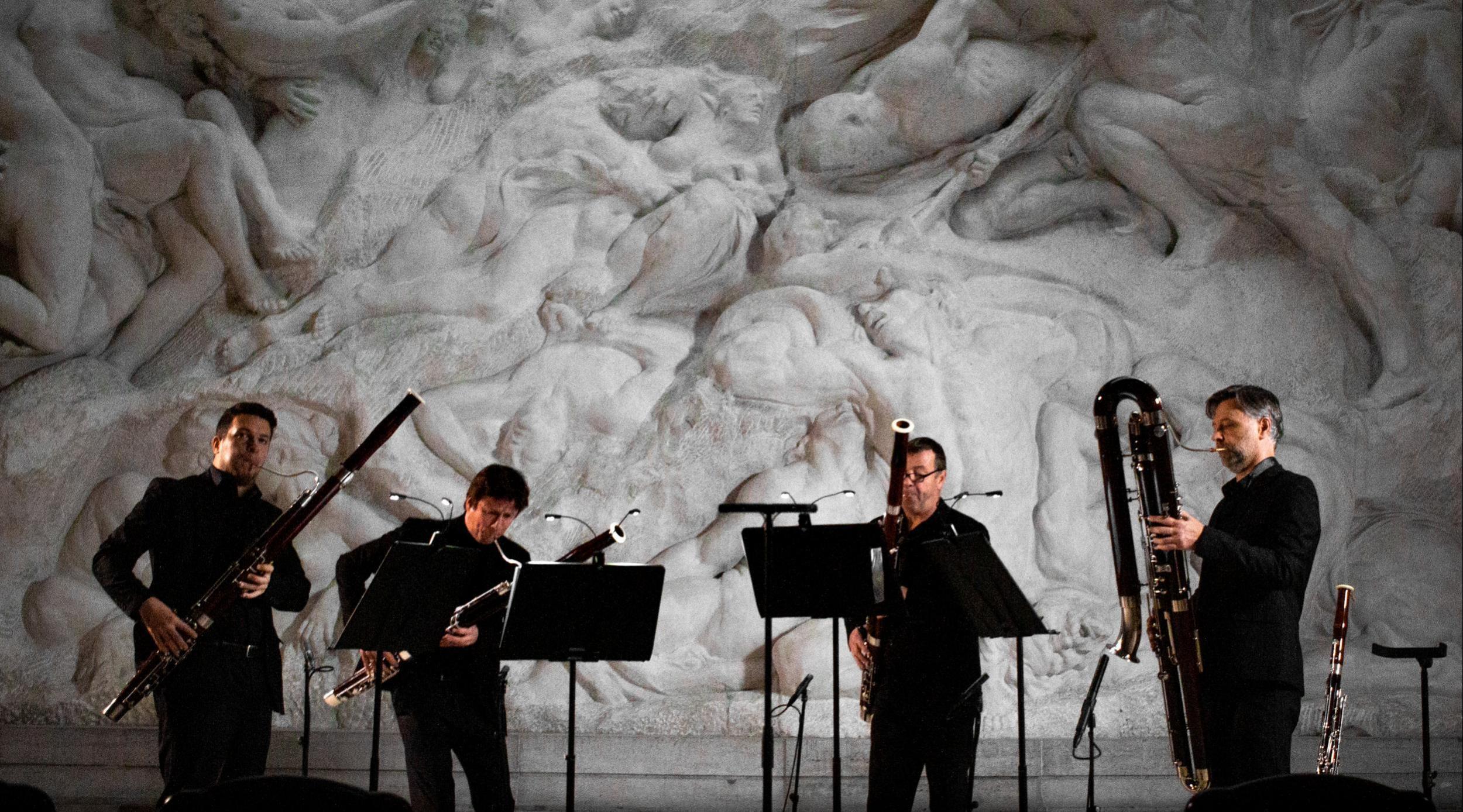
It is common knowledge that Brussels is rich in museums. But actually visiting them is something we rarely do. We helped you discover some exquisite collections and added another dimension: live music, performed by musicians of the Belgian National Orchestra.
On December 18th, some of the instrumentalists of the Belgian National Orchestra were visiting the Museum Art & History (located in the Cinquantenaire Park). This museum - the largest in the country - has an enormous collection. The building that houses it is also an unmissable landmark of Brussels' architectural heritage.
The music performed by our musicians was selected by them and was inspired by the spaces in which they played as well as by the artefacts displayed in these areas. The orchestral musicians of the Belgian National Orchestra were joined by young talent from the Orchestra Academy, a scholarship for promising conservatory students in collaboration with la Monnaie/de Munt.
PASSIONS UNLEASHED
Gordon Fantini, bassoon
Bert Helsen, bassoon
Rémy Roux, bassoon
Filip Neyens, bassoon & contrabassoon
Scott Joplin, The Ragtime Dance (Arr. David Whitehouse)
Scott Joplin, The Easy Winners (Arr. David Whitehouse)
Erik Satie, Le Piccadilly (Arr. David Whitehouse)
Claude Debussy, Golliwog’s Cake Walk
Claude Debussy, The Little Negro
Sergei Prokofiev, Scherzo Humoristique
In elaborating a programme for this gallery, we went back to the time when Horta and Lambeaux first designed it. Many prominent musicians were active during the Art Nouveau period (late 19th and early 20th century); composers such as Ravel, Debussy and Satie. The latter is best known for his Gymnopédie, but he also wrote less ‘serious’ music, which was commissioned by cabarets he regularly frequented (often to pay his bills).
This aspect of the “Human Passions” seemed to be an excellent starting point, and on closer inspection, Ravel and Debussy themselves were not above writing a ragtime, a march or a waltz. A march by Satie sounds perfect with a bassoon quartet! We suddenly had our ensemble.
We begin with a contemporary who became well known for his ‘light’ music – the American Scott Joplin: three ragtimes (originally for piano) in an arrangement for three bassoons and contrabassoon. Then a waltz by Satie, followed by a piece by none other than Claude Debussy (he also reveals a less serious facet).
We round off with a contemporary from Russia, Sergei Prokofiev, who also wrote a ‘Humorous Scherzo’… originally composed for four bassoons.
THE WESTERN TRAIL
Alexei Moshkov, Konzertmeister
Nathalie Lefin, second violin
Dmitri Ryabinin, alto
Olsi Leka, cello
Antonín Dvořák, String Quartet No. 12, Op. 96, “American Quartet”
Discovering this part of the museum must be a bit like Antonín Dvořák’s discovery of America when he arrived in New York in the late 19th century. During this period, he composed several ‘American’ works, including his ninth symphony From the New World and the fantastic American Quartet, in which he incorporated a number of American folk melodies and even worked in some jazzy elements (note of blues and a ‘swinging’ finale). He uses the rhythms of traditional native American drums, and in the third part even incorporated the song a bird found only in the forested areas of the Eastern states (the scarlet tanager).
Of course, Dvorak did not hide his Czech roots and his typical style, and the melancholy of his homeland regularly shines through in this quartet, which soon became his most popular!
OM NAMAH SHIVAYA
Annie Lavoisier, harp
Baudouin Giaux, flute
Katelijne Onsia, alto
Ravi Shankar, excerpt from L’aube enchantée (on the raga Todi)
Claude Debussy, Sonate pour flûte, alto et harpe, L137
Welcome to the East!
The décor in this room gives a sense of the Oriental influence that so fascinated Western artists, painters, poets and musicians, as if searching for a faraway paradise lost, tinged with strange and exotic sounds.
The concert begins with the Indian Todi Raga, which marks the dawn. Its melodic framework consists of a sequence heard throughout the piece. We will play an excerpt from the beginning, and then lead straight to Debussy’s Sonata.
You will hear how Debussy was inspired by this language and used it in his compositions. He builds his music from sound colours; he uses varied modal scales, pentatonic scales and tone scales, which give an impression of fragments of eternity without beginning or end. And in the Sonata for flute, viola and harp, written two years before he died (he was the first person to combine these three instruments), there is a sense of time suspended; a floating sensation that could be eternal.
He said of this sonata: “It’s terribly melancholy, I don’t know whether one should laugh or cry.”
MUSICAL STROLL IN APAMEA
Annie Lavoisier, harp
Eleonora Congiu (Orchestra Academy), harp
Baudoin Giaux, flute
Jérémie Fèvre, flute
Hector Berlioz, L'enfance du Christ (Trio des Ismaélites) pour 2 flûtes et 2 harpes
Philippe Gaubert, Divertissement Grec pour 2 flûtes et 2 harpes
Ottorino Respighi, Siciliana from Antiche danze ed arie per liuto (sec. XVI-XVII)
Jean Absil, Sicilienne for flute and harp
Claude Debussy, Excerpts from Musique de scène pour les Chansons de Bilitis for 2 flutes and 2 harps
When thinking of Italy and Rome, one can’t help but make the connection with Greco-Latin civilisation. Defeated by force of arms in the 2nd century BCE, Greece was to take its revenge on Rome, bequeathing to its conqueror its arts, its science and its art of living…
We therefore felt the need to make a connection with Greece in this majestic gallery. There are many references to ancient Greece among Western artists, painters, poets and musicians at the end of the 19th and 20th century. It exerted a fascination, and one can imagine how at times of war, ancient Greece represented an escape, an ideal land of refuge where harmony reigned.
Through our programme, we invite you to savour this art of living rich in legends, poetry, music and dance.
Enjoy your journey to the roots of our civilisation!

